Modern rustic decor – top designers reveal their secrets for styling the trend
These inspiring designers know a thing or two about how to style the modern rustic decor look
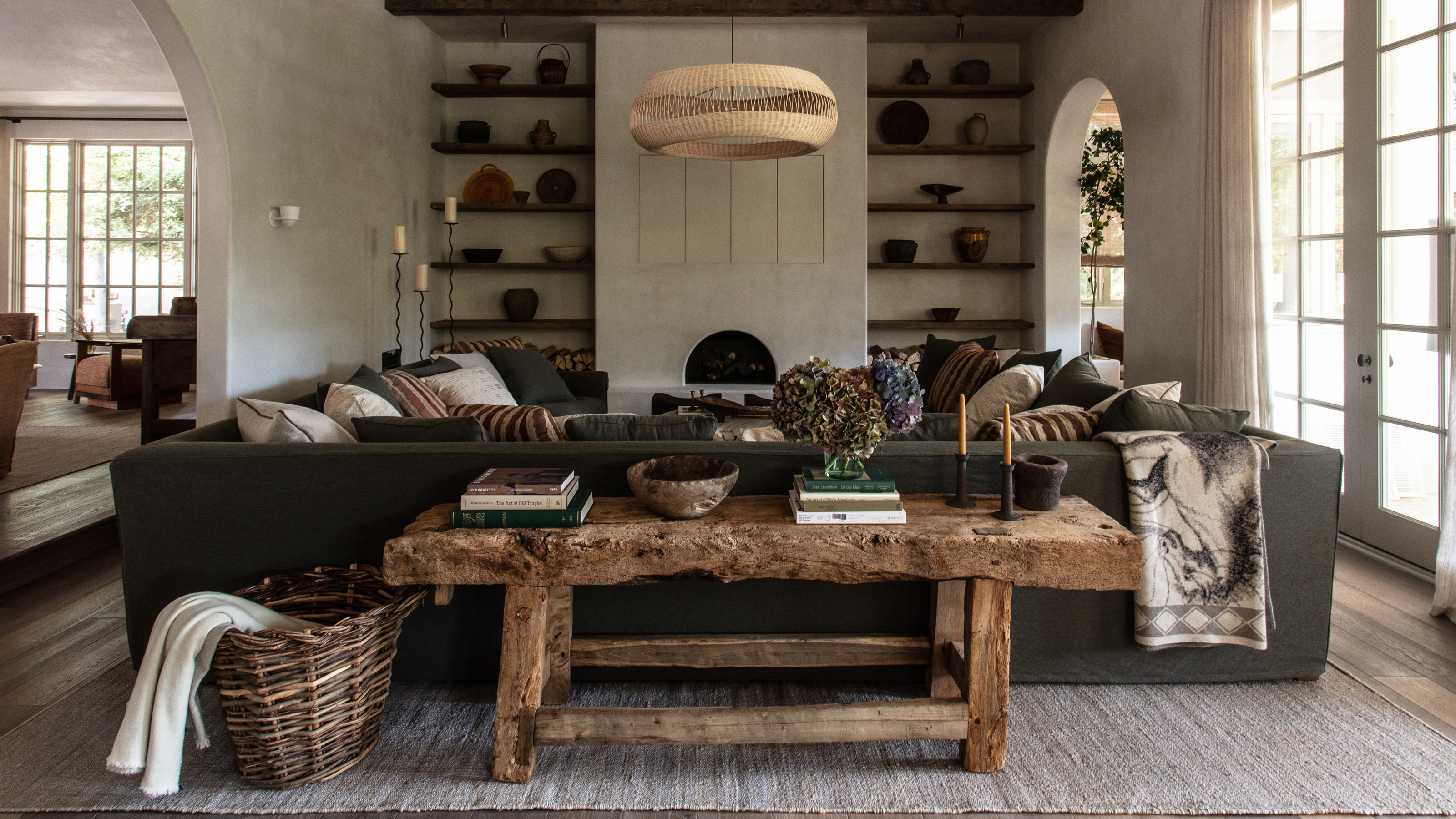

Modern rustic decor has a certain magic to it that gives it universal appeal. It draws on a design aesthetic that's filled with natural materials and is undeniably cozy –these rooms are like a warm embrace; they're cocooning spaces that feel effortlessly stylish. What's not to love?
It's also an interior design trend that some of our favorite designers excel in. Our Instagram feeds are stuffed with beautifully layered, eclectic modern rustic schemes, that feel like they've been expertly curated with these designers' favorite characterful finds.
Yet, while these spaces feel easygoing, crafting this look isn't as simple as it looks. It requires mixing and matching elements, creating a balance between the modern and rustic textures. We asked the experts on this decor style for their top tips on making a modern rustic scheme work.
What is modern rustic decor?
First things first, what are the key elements of modern rustic decor? It's characterized by a few common traits. The interiors created in this design style usually have neutral color schemes, a spectrum from white to brown with a few other earth tones for good measure. Furniture and accessories are imbued with character - a distressed patina, perhaps, or highlighting the natural qualities of a material.
Linen and textural textiles, such as boucle, are often seen in these design schemes, with solid fabrics a preference over patterns and prints. Floors in wood, encaustic tiles and terracotta suit a modern rustic aesthetic, with woven rugs adding a comfortable element. There's a biophilic design quality to this scheme too, which looks at bringing the outdoors in, through not only materials, but foliage, plants and trees.
1. Contrast rustic pieces with modern elements
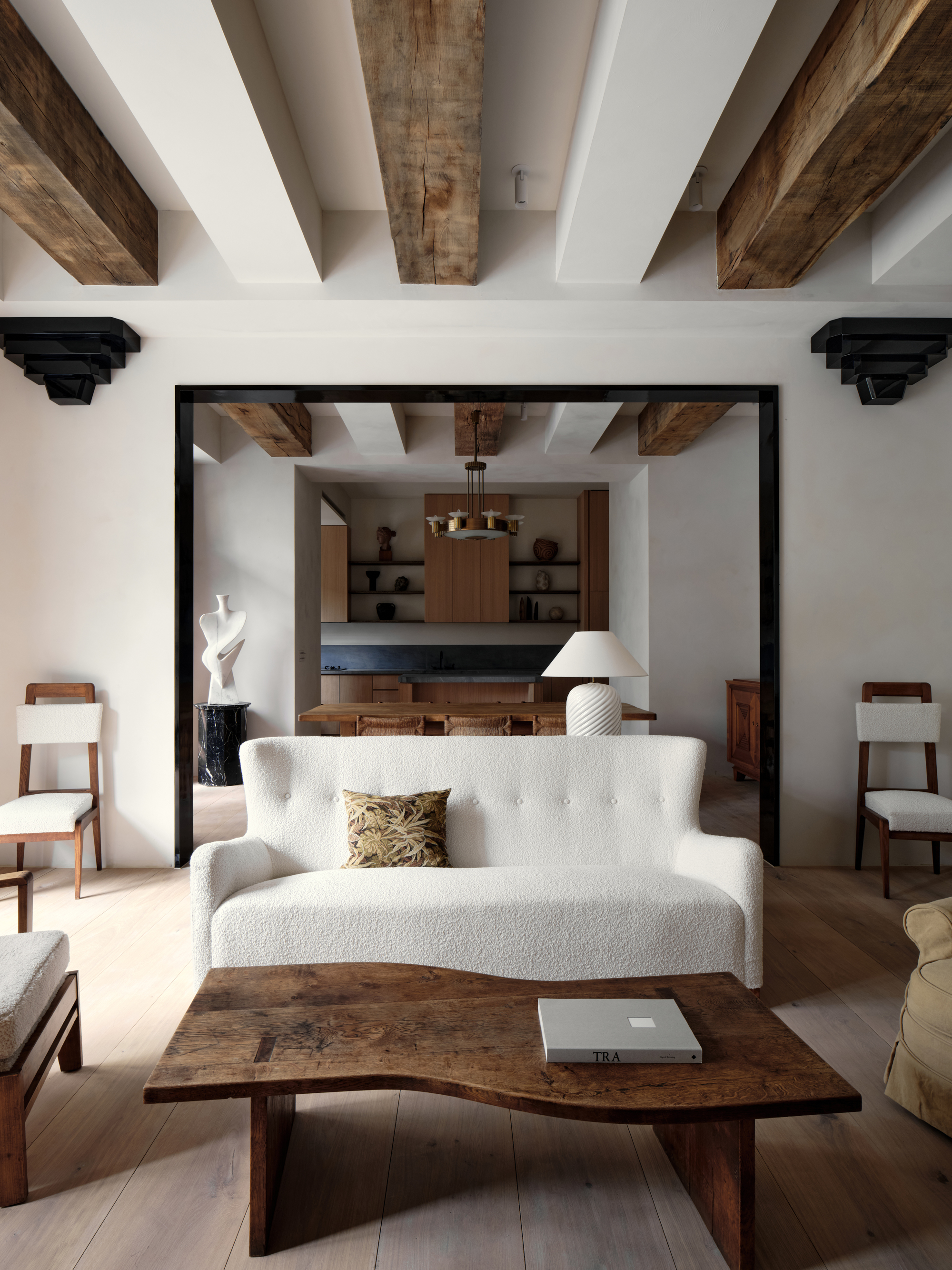
Rustic design elements are perenially popular for the warmth and character they bring to a space, but with that in mind, how do you curate a design that feels fresh and interesting using rustic elements?
According to founder and director of Ecru Studio, Jin Chen, introducing something unexpectedly modern can help to elevate a rustic scheme.
'For this project, we tried to mix materials,' Jin Chen explains. 'Alongside the rustic wood and white beams, we also add some gloss black elements to give a sense of modernity.'
The artifice of the color and finish adds an edge to this modern rustic living room, contrasting against the natural textures in a bold, interesting way.
2. Create a rustic backdrop with the right plastered finish

As you might have come to realize, bold paint colors and patterned wallpapers don't feature in the modern rustic aesthetic. Instead, for walls that really speak to this design ethos, it's about creating the right texture.
For interior designer Sarah Solis, founder of Sarah Solis Design Studio, it's the heart of a modern rustic scheme. 'I love plaster, always,' Sarah tells us. 'Hand-trowelled plaster.' An application method such as this introduces imperfections into the walls, not only channeling a laidback 'wabi-sabi' feeling, but introducing textures that catch the light and add a sense of depth to walls.
This allows for a minimalist interior design style within modern rustic spaces. Walls don't feel blank if they aren't loaded with art and other decor, while the softer, less precise lines bring an organic quality to your home that feels relaxed and serene.
3. Introduce woven textures
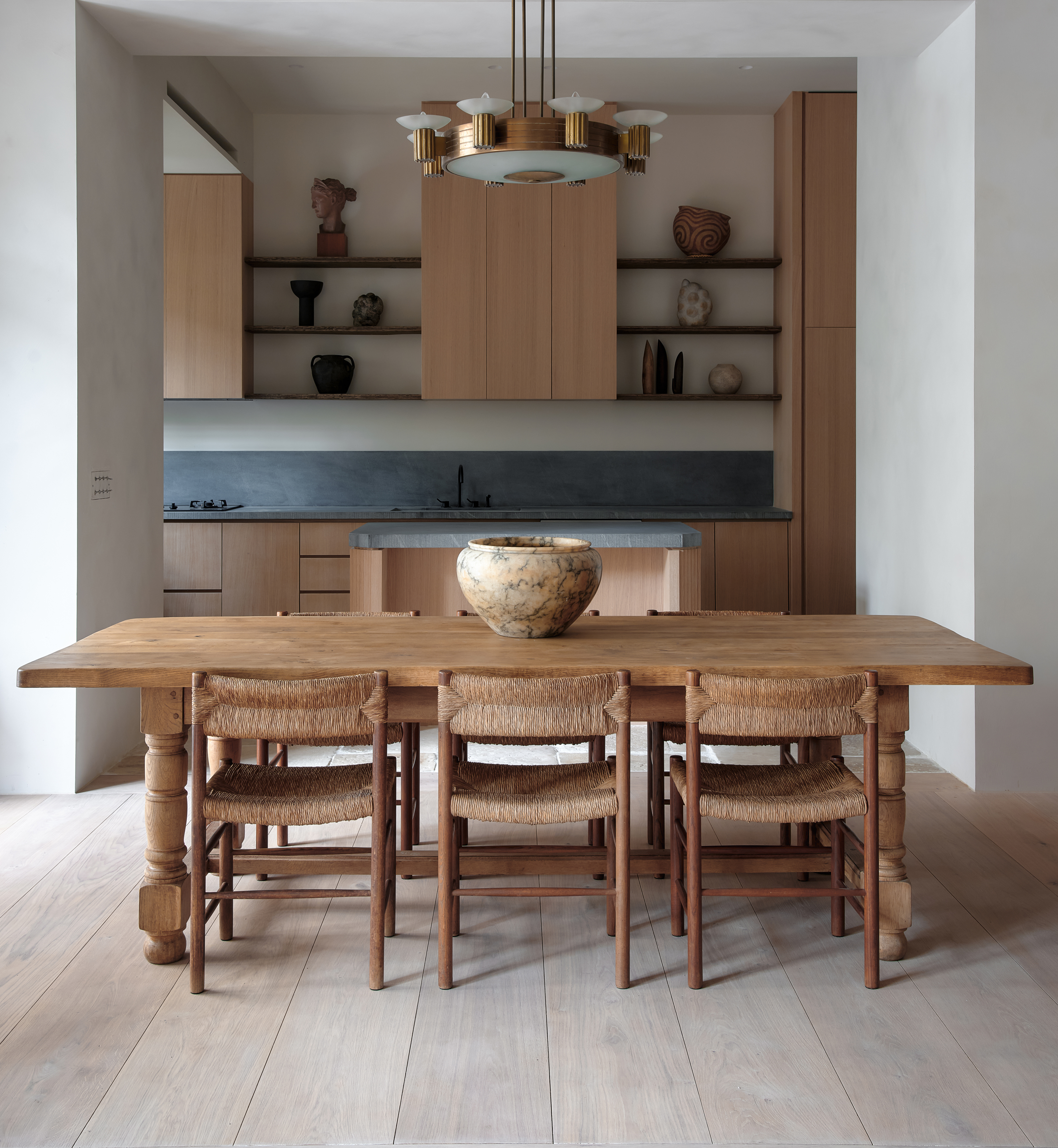
Woven textiles have a lot to often a modern rustic decor scheme, layering a different aesthetic appeal through texture and beautiful earth tones.
'We love woven textures and have been incorporating materials like wicker, rush, jute, and abaca in all of our projects,' says interior designer Jake Arnold. While you might be most familiar with the likes of jute rugs in interiors, there are other ways to bring woven textures into a modern rustic scheme. 'They're most frequently in the form of rugs and lighting, but more recently we have been using a lot of rush furniture frames as well,' Jake says. 'It’s a great way to break up upholstery seating groups and is a really warm and inviting material no matter the home.'
As this modern dining room idea shows, rush chairs make for an interesting companion for a rustic dining table, almost completely color-matched, but adding a different, tactile finish into the set-up.
4. Use reclaimed wood
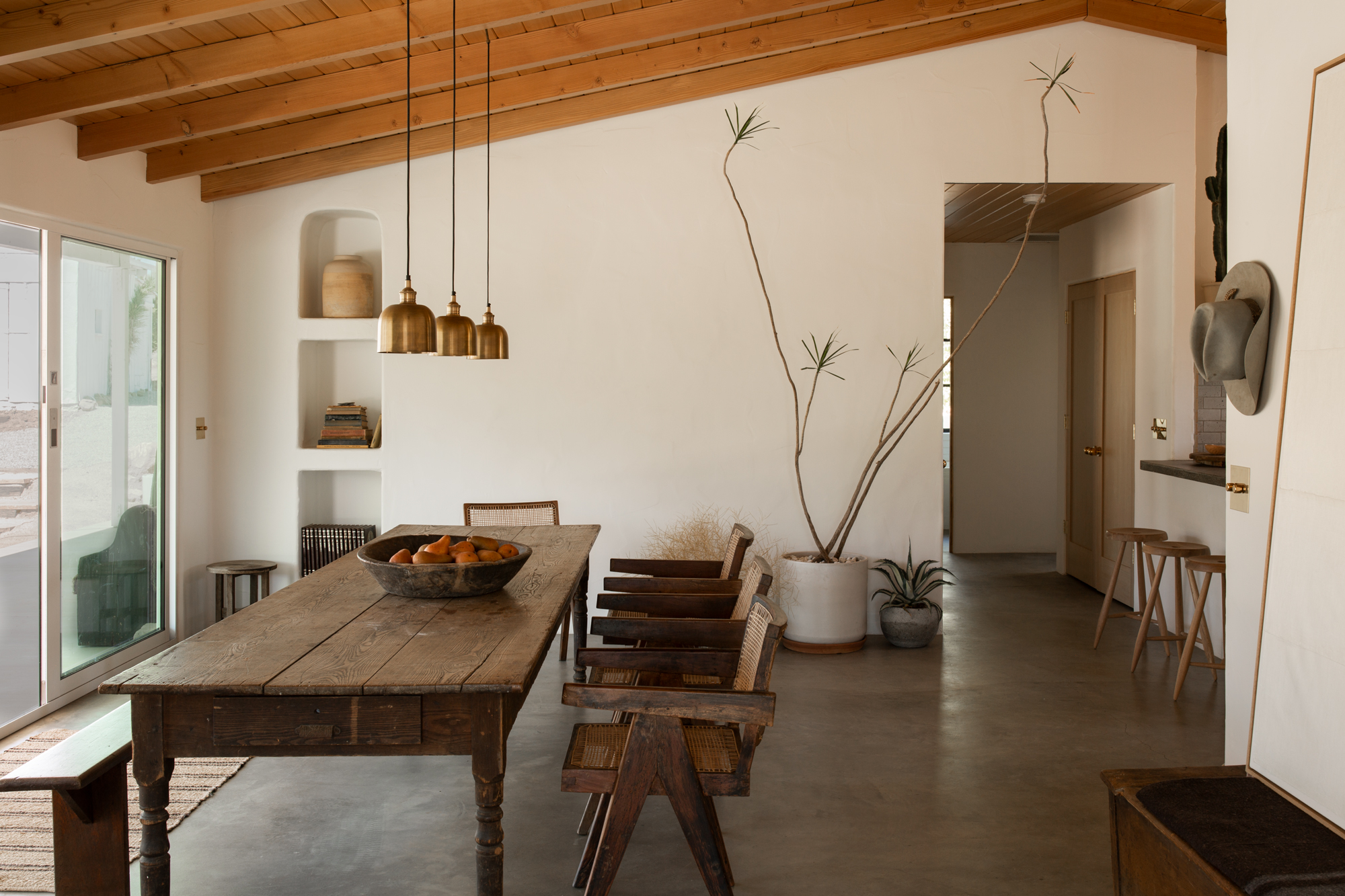
If you're looking for an easy way to bring a modern rustic feel to your space, seeking out reclaimed wood for furniture and accessories can really bring the charm you're looking for, as well as upping your sustainable living credentials. 'Rustic decor often calls for reclaimed or repurposed wood,' explains interior designer Sarah Solis, 'but to keep things modern and fresh, avoid overlaying and putting too many things into the same space. It's all about materiality and balance.'
This balance can be achieved in a modern rustic space by creating contrast between materials that exist in the rustic space, but at either end of the spectrum. 'Balancing modern and rustic could translate to combining salvaged wood with concrete, or plaster walls with marble,' suggests Sarah. Natural versus brutalist, rough versus luxe, it's this variation that helps a rustic scheme feel modern and fresh.
5. Seek out vintage pieces
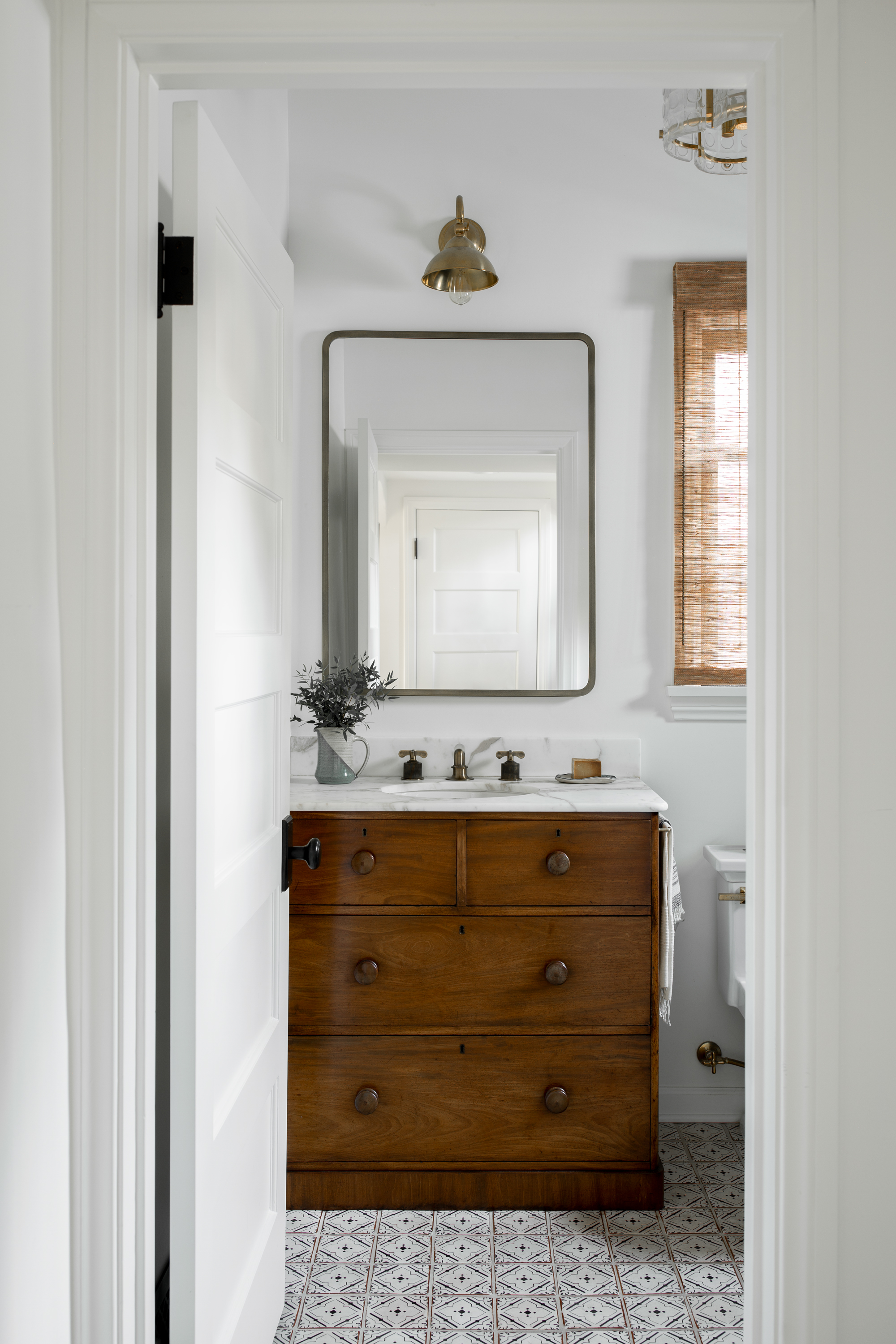
The patina of vintage furniture can give even a simple scheme a modern rustic edge. However, to make the look authentic, you'll need to get to grips with sourcing to find pieces that you really engage with. 'Research is really important when it comes to sourcing vintage,' says Jake Arnold. 'I recommend starting with high end galleries and seeing what pieces of various vintage designers resonate with you. From there, search those designers on other platforms and see what populates. Having knowledge when sourcing is really important so that you can differentiate between the good and the bad.'
Vintages pieces can be adapted beyond their original functionality, too, as in this modern bathroom design. 'A vanity could be repurposed with a vintage chest or you could use salvaged wood to design a custom vanity,' suggests Sarah Solis, 'even if you built it in a very modern shape it provides that rustic element that really makes the space sing.'
Is modern rustic decor on trend?
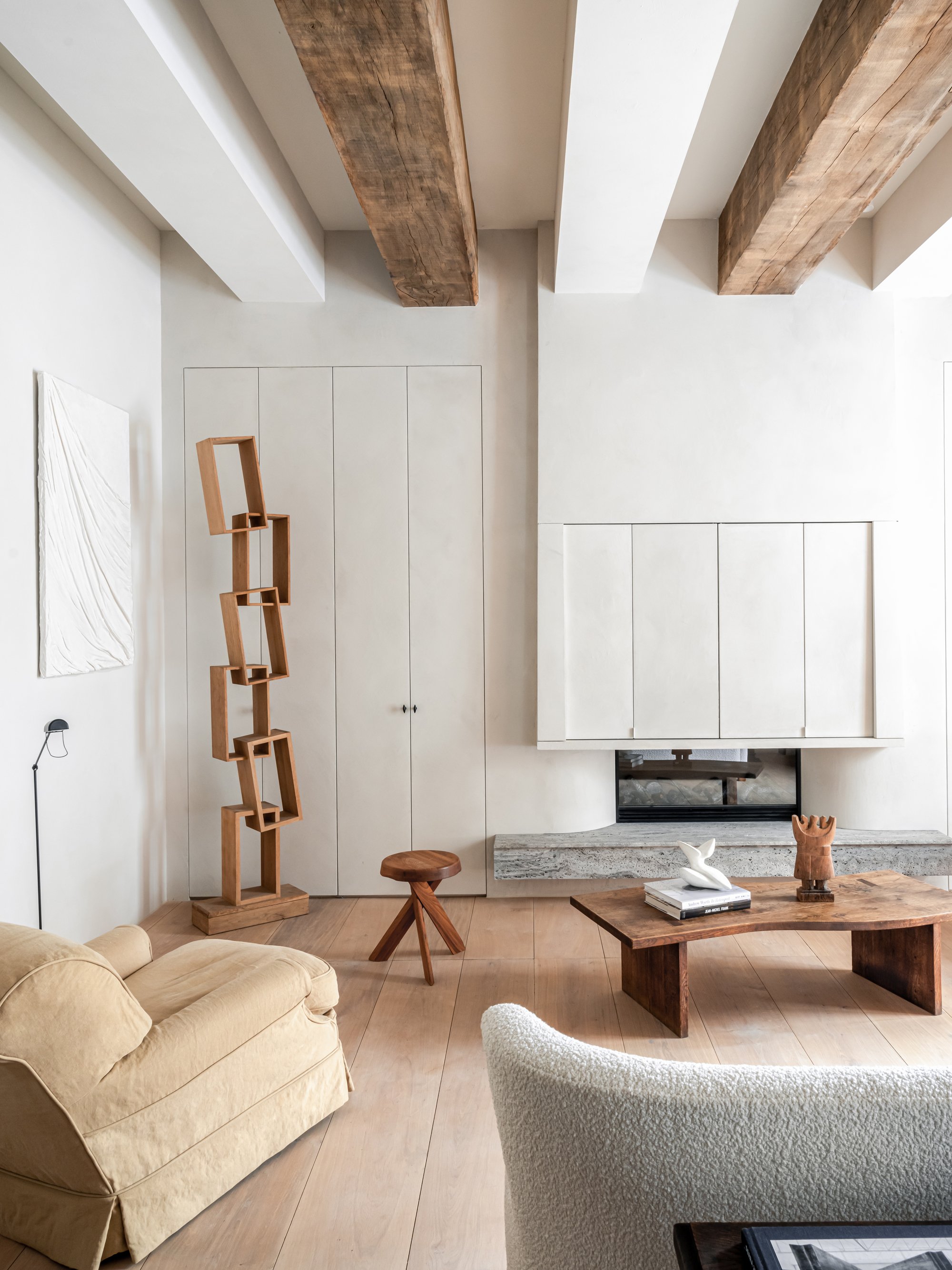
Modern interiors, in their traditional sense, are largely out of style. The super sleek, reflective finishes and futuristic shapes that once were so sought after have receded for interiors that include bountiful natural materials and warm, comforting textures in spades.
Modern rustic is one of the most popular styles to emerge from this aesthetic movement, and for good reason. It appeals to a broad church – it's minimal, but not as stark as the traditional view of minimalism that some find off-putting, while it's a decor style that's defined by being comfortable and cozy, yet doesn't feel dowdy or pedestrian.
More creative modern rustic interiors are influencing the trend, too. Intriguing curves and sweeping lines and luxury materials with a rustic edge are some of the defining elements of organic modern style that's feeding into the modern rustic look, ensuring this sort of scheme feels high-end.
Be The First To Know
The Livingetc newsletters are your inside source for what’s shaping interiors now - and what’s next. Discover trend forecasts, smart style ideas, and curated shopping inspiration that brings design to life. Subscribe today and stay ahead of the curve.

Hugh is Livingetc.com’s editor. With 8 years in the interiors industry under his belt, he has the nose for what people want to know about re-decorating their homes. He prides himself as an expert trend forecaster, visiting design fairs, showrooms and keeping an eye out for emerging designers to hone his eye. He joined Livingetc back in 2022 as a content editor, as a long-time reader of the print magazine, before becoming its online editor. Hugh has previously spent time as an editor for a kitchen and bathroom magazine, and has written for “hands-on” home brands such as Homebuilding & Renovating and Grand Designs magazine, so his knowledge of what it takes to create a home goes beyond the surface, too. Though not a trained interior designer, Hugh has cut his design teeth by managing several major interior design projects to date, each for private clients. He's also a keen DIYer — he's done everything from laying his own patio and building an integrated cooker hood from scratch, to undertaking plenty of creative IKEA hacks to help achieve the luxurious look he loves in design, when his budget doesn't always stretch that far.
-
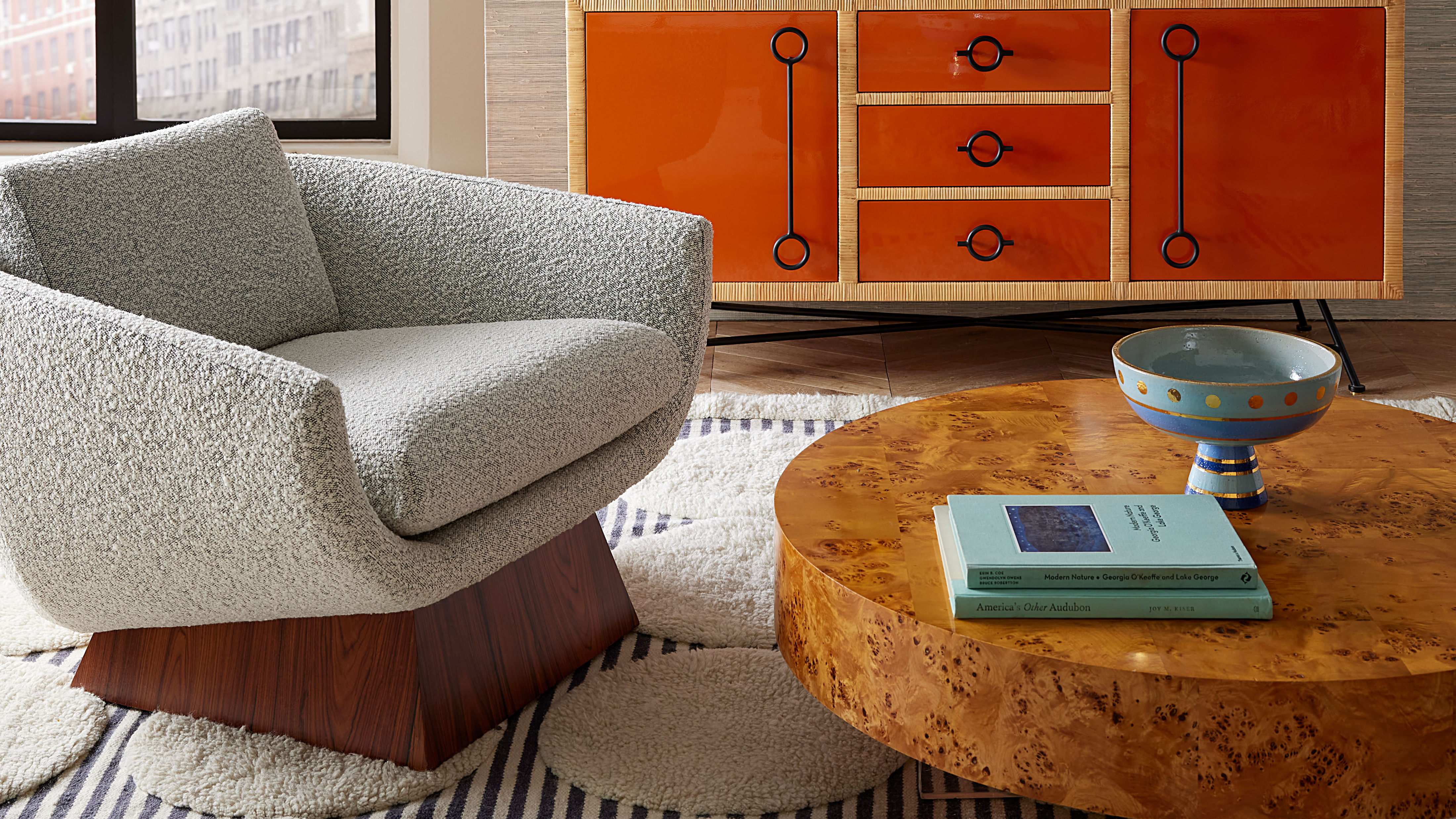 Burl Wood Decor Is 2025’s Most Coveted Comeback — Here’s How to Get the Storied Swirls for Less
Burl Wood Decor Is 2025’s Most Coveted Comeback — Here’s How to Get the Storied Swirls for LessIrregularity is the ultimate luxury, but you don’t need an antiques dealer to find it
By Julia Demer Published
-
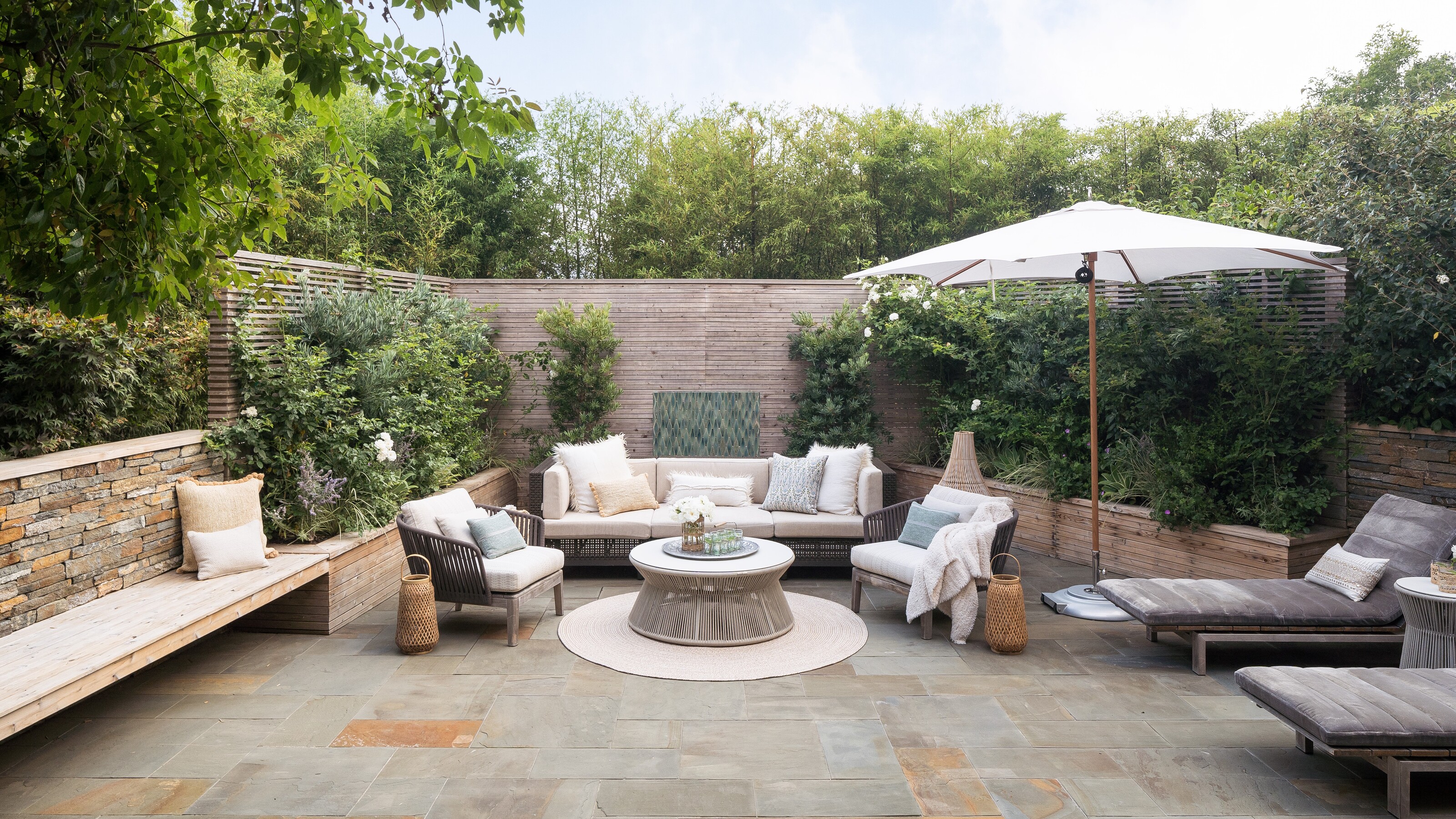 5 Garden Features That Instantly Add Value to Your Home — While Making Your Outdoor Space More Practical, too
5 Garden Features That Instantly Add Value to Your Home — While Making Your Outdoor Space More Practical, tooGet to know all the expert tips and tricks for making your backyard a standout selling point for your home.
By Maya Glantz Published